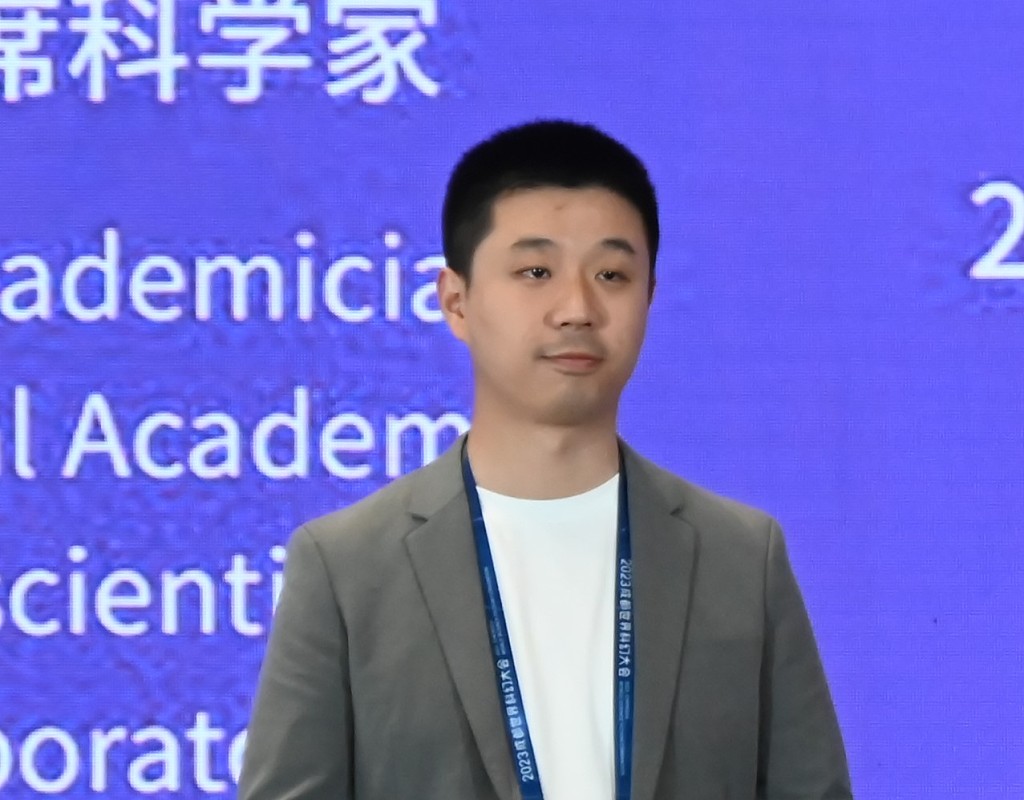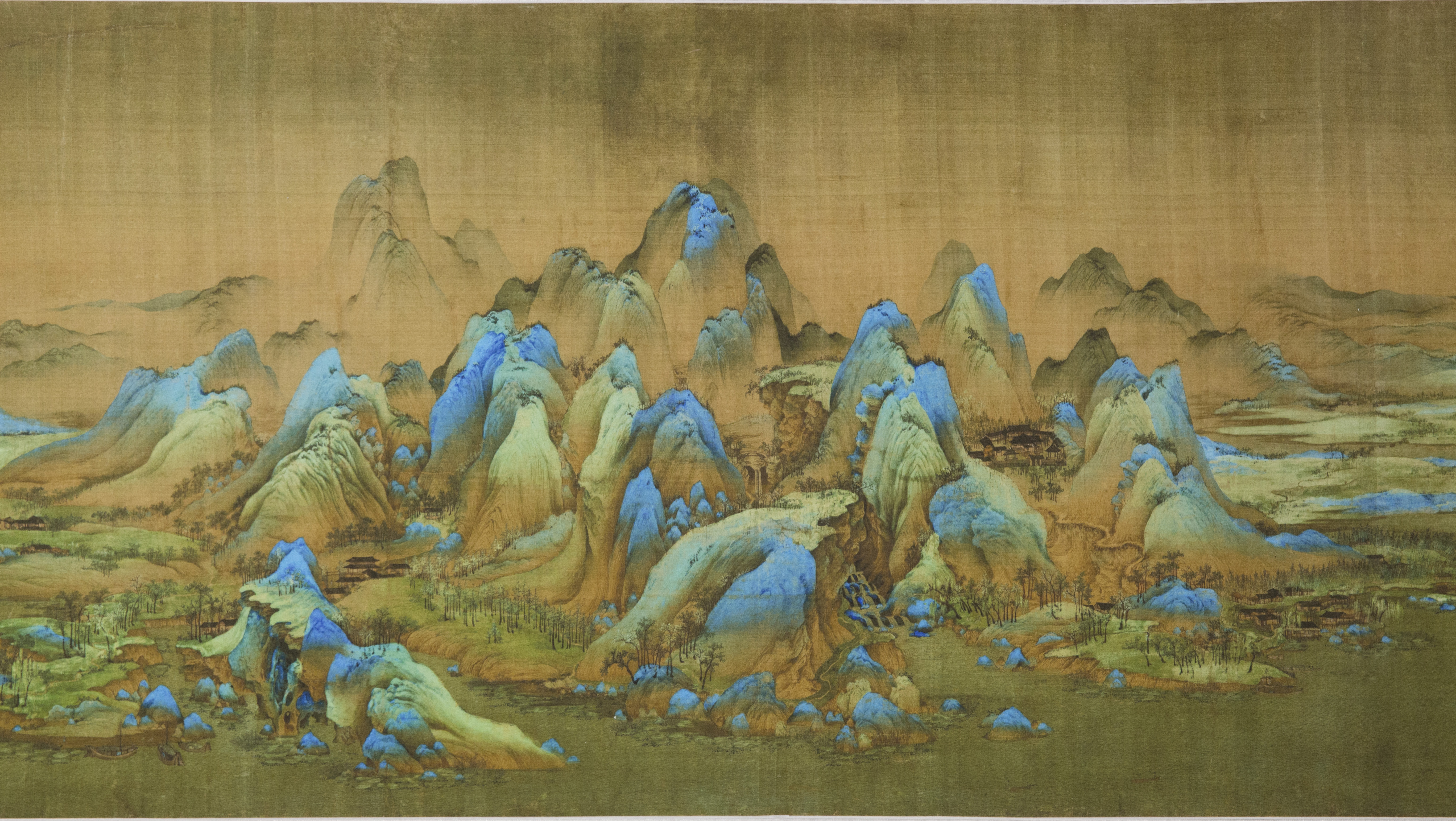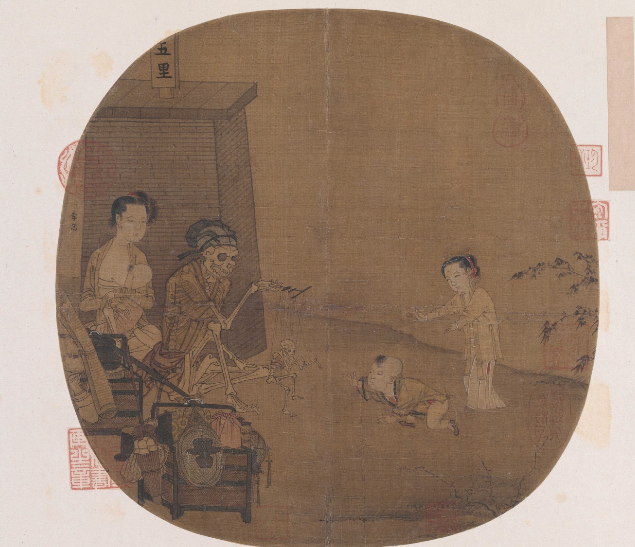
Chinese writer Hai Ya attends a sci-fi event at the 81st World Science Fiction Convention in Chengdu, Sichuan Province, on October 22, 2023. /CFP
Chinese writer Hai Ya attends a sci-fi event at the 81st World Science Fiction Convention in Chengdu, Sichuan Province, on October 22, 2023. /CFP
Chinese writer Hai Ya received the Hugo Award for Best Novelette for his work "The Space-Time Painter" at the 81st World Science Fiction Convention (WorldCon) held in the southwestern Chinese city of Chengdu on October 22.
The 33-year-old is the third Chinese writer to win the Hugo Award, following Liu Cixin and Hao Jingfang.
In the "The Space-Time Painter," Hai created a story that was inspired by a 900-year-old landscape painting masterpiece known as “A Panorama of Rivers and Mountains” created by artist Wang Ximeng during the Northern Song Dynasty (960-1127).

A detail from "One Thousand Li of Rivers and Mountains" by Wang Ximeng, a Chinese painter from the Northern Song Dynasty (960-1127). /CFP
A detail from "One Thousand Li of Rivers and Mountains" by Wang Ximeng, a Chinese painter from the Northern Song Dynasty (960-1127). /CFP
Wang painted the work at the age of 18, and although a clear date cannot be established, historians believe that he died at the age of 20.
The early death of the artist coupled with the scarcity of historical records left ample room for Hai Ya to use his creativity and imagination to develop a plot around the character. Based on the life of Wang Ximeng, Hai created the character of a painter named Zhao Ximeng, a prodigy that painted for the emperor.
Hai Ya endowed his protagonist with a superpower where he was able to access higher-dimensional space. Since this superpower was completely incomprehensible to people in the Song Dynasty, he attempted to keep it a secret and attributed it to a type of mental condition as a disguise.
In order to recreate the masterpiece of "A Panorama of Rivers and Mountains," the protagonist repeatedly detached his spirit from his physical body and entered higher-dimensional space, surveying the landscape as reference material for his artwork.
Gradually, he discovered that he could not only free himself from the constraints of space but also break the limits of time. He said: "Looking down upon the mundane world from the higher-dimensional realm, it is like a coiling brocade ribbon. Vertical movement signifies spatial transformation, while horizontal movement signifies time travel, which, for me, is no different."
Through the twists and turns in Zhao's life, the story reveals the political struggles behind this marvelous painting and the struggles and battles of individuals against the torrents of time.

"Skeleton Puppet Play," a work by Southern Song Dynasty (1127-1279) painter Li Song, features a skeletal devil pulling multiple strings attached to the joints of a smaller skeleton. /CGTN
"Skeleton Puppet Play," a work by Southern Song Dynasty (1127-1279) painter Li Song, features a skeletal devil pulling multiple strings attached to the joints of a smaller skeleton. /CGTN
In the novel "The Space-Time Painter," Hai Ya also mentions another painter and his enigmatic work, the "Skeleton Puppet Play," a painting by the Southern Song Dynasty (1127-1279) artist Li Song.
In this small fan-sized painting, Li Song depicted a scene of a puppet show where a large skeleton, dressed in clothes and a hat, manipulates a puppet with strings, directing it to perform various actions. A curious baby crawls towards the skeletal puppet during the performance.
The coexistence of the living and the dead, and humans and skeletons in the same artwork is extremely rare in ancient Chinese paintings, and as a result, sparked wide speculation and interpretation throughout later generations.
The mysterious layering of history and science fiction interpreted in "The Space-Time Painter" may be one of the reasons why this work has stood out. Hai said as he accepted the award: "The ultimate judgment of whether a work is excellent or not should be left to the readers. I can’t guarantee that every piece [I write] will satisfy readers, but I can assure you that each one is a product of my dedication. 'The Time-Space Painter' is a historical science fiction novel rooted in local culture that also encompasses universal human emotions. Perhaps this is why it resonates with people. I’m very happy that this work has received recognition, and as for my personally most satisfying work, it will always be the next one."
A science fiction enthusiast who works in the financial industry, Hai started writing sci-fi stories in 2016 and published his first work in 2019. "The Space-Time Painter" was published in 2022.